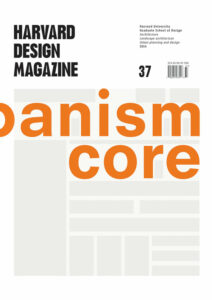Education Superinfrastructure: Education + Urbanization in Rio de Janeiro, Brazil
The school, like the church, market, stadium, or town hall, has been incorporated into our image of the city: a heterogeneous mixture of public and private institutions set within a field of residential settlements and linked with infrastructural systems. By naturalizing the presence of the school in the city, however, we fail to recognize critical tensions associated with its emergence as an institution and its role in projecting an alternative model for organizing the social and material order.1 To avoid this oversight, we must defamiliarize the school in order to see it as symptomatic of an underlying system or structure that is operative at the territorial scale. The school conceived as such is transformed from an autonomous typology that appears within the urban fabric to the formal expression of an educational system that, like a utility or mobility system, can be analyzed and understood in terms of how it organizes territory and shapes urbanism.
In this way, educational institutions can be understood as having a geography; they inscribe a shape on the land that is a trace of the social and political forces that cause them to arise, the spatial expression of a particular ideological domain.2 This geographic dimension of the school was first delimited within the 20th-century discourse on urbanism by Clarence Perry’s neighborhood unit, an attempt to articulate the systematic relationship between school and territory that created a powerful diagram for the city. The neighborhood unit, along with the Garden City and the superblock, was deployed worldwide as the basic unit of modernist city planning by the members of CIAM,3 and while this provenance clearly invites critique, it also offers a chance for redemption. For even though the neatly ordered and nested scales of Perry’s neighborhood unit may have proven too rigid to address the complex realities of the heterogeneous and multicentered modern city, by reconceiving the neighborhood unit as a spatial syntax constructed among schools and other urban elements (dwellings, public buildings, parks, roads, etc.), we can recover its power as a design model for addressing problems of scale, legibility, and fragmentation that plague the contemporary metropolis.4
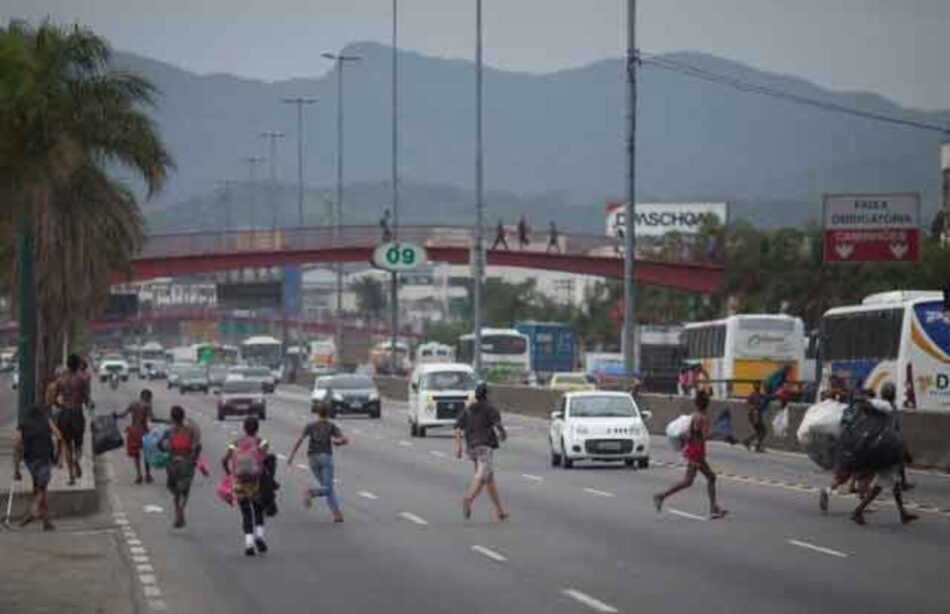
Education Superinfrastructure is an attempt to recover this instrumentality of the neighborhood unit, the diagrammatic association it makes between school and city, while emptying it of the ideological baggage that had limited its applicability to the modern metropolis. It can then be redeployed as a device for both reconceiving our cities around the exchange of knowledge and for giving shape to urban form as the reification of that exchange.
The initial testing ground for this experiment is Rio de Janeiro, a city at once unique in its formal conditions, yet typical in its struggle with the problems of centrality, uneven distribution, and informality plaguing the contemporary metropolis of the global South. Urban planning efforts that have focused on the extreme conditions of Rio’s slums have overlooked the fact that the stark socioeconomic disparity between these favelas and the many exclusive gated communities masks their fundamental similarity as twin manifestations of a single, and more insidious, malady: the urban enclave. The isolation, fragmentation, and exclusion endemic to these urban enclaves have metastasized into a global phenomenon plaguing the city, and this systemic condition therefore calls for operations between and among the city’s fragments, rather than merely within them.
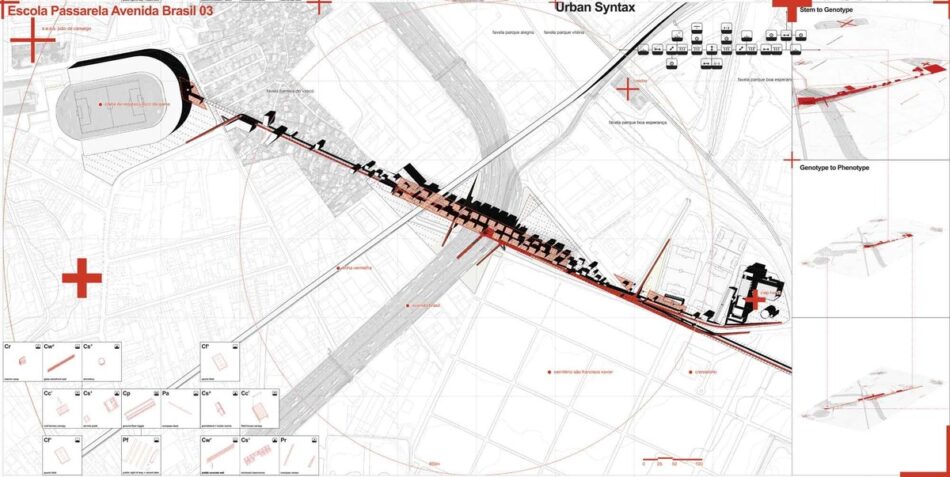
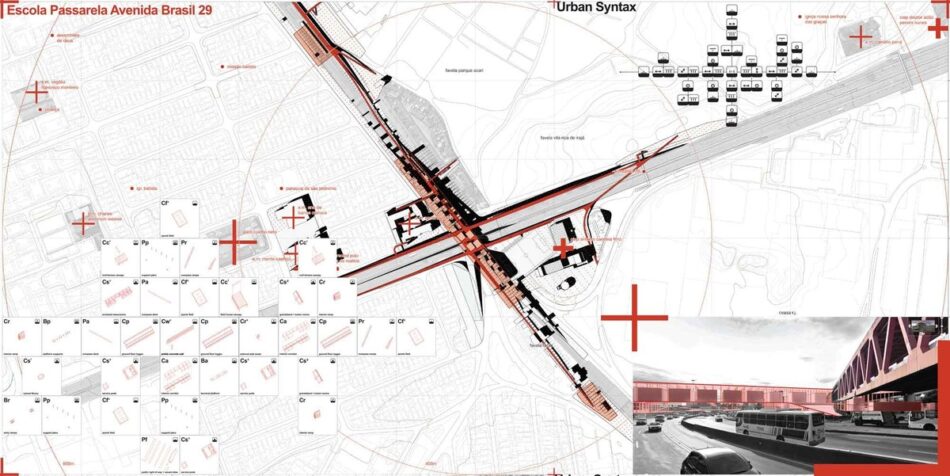
Like a vaccine, Education Superinfrastructure begins with the assumption that the raw material for an urbanistic project can be found within the existing conditions of the city. In this case, the operation begins with the analysis, abstraction, and recombination of three types of common urban equipment: a school, a bridge, and a bus stop. These types are not selected at random but are essential ingredients of a particular formula: Oscar Niemeyer’s Integrated Centres of Public Education (CIEPs) are recovered from his failed attempt to use schools to produce urbanism, while Rio’s ubiquitous passarelas (pedestrian bridges) are appropriated as urban artifacts symptomatic of the unfulfilled desire for connectivity. These provide opportunistic sites for the insertion of Bus Rapid Transit (BRT) stations, harnessing the accelerated implementation of mobility infrastructure to drive large-scale spatial transformation in the city’s interstices.
These ingredients are analyzed, recoded, and hybridized through an idiosyncratic methodology to produce a new formal type; one that is neither object nor system but a kind of “quasi-object.”5 By decoding the spatial typology of the school-as-object, extracting the CIEPs genetic roots in the architecture of Le Corbusier and Hannes Meyer, its spatial genes can be grafted onto the organizational syntax of the system, in this case Shadrach Woods’s “stem” type neighborhood unit. This produces new spatial “genotypes,” which are then inserted into the urban fabric at a series of key passarelas. These genotypes are expressed in a new “phenotype” that mediates the particularities of each site, while giving formal legibility to its spatial syntax at the scale of an architectural megaform.
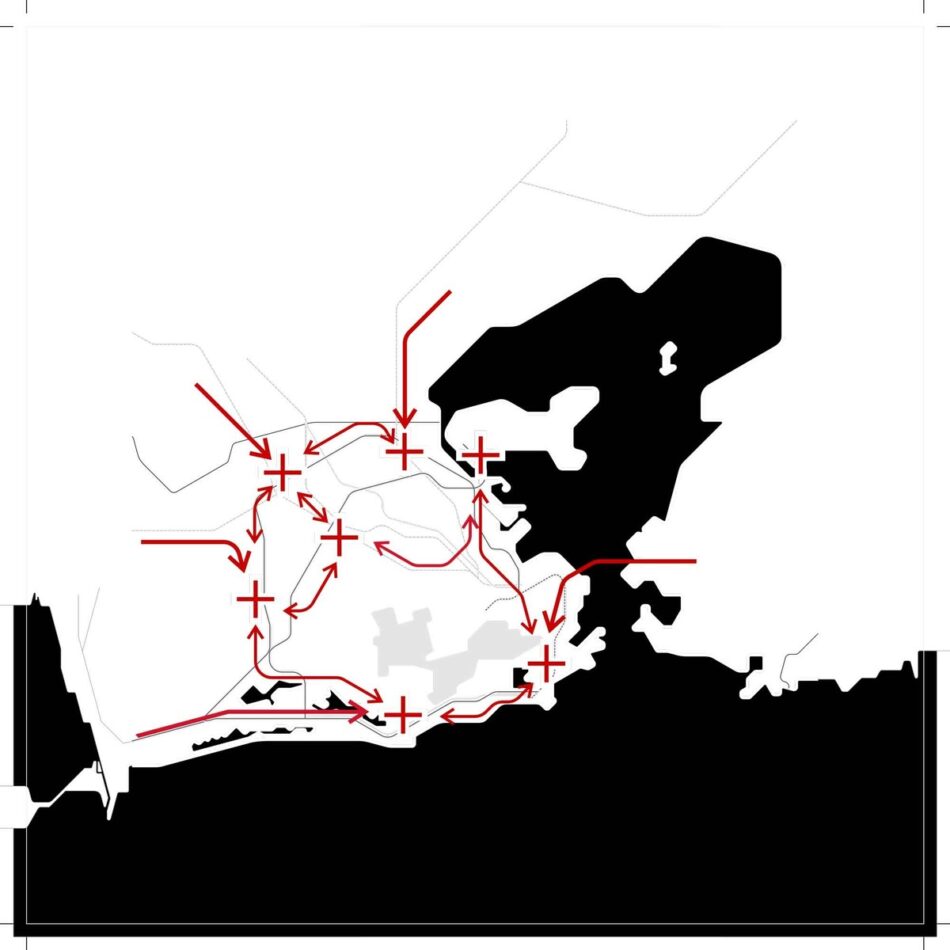
This formal operation is combined with a programmatic remixing of typologies, resulting in a hybrid piece of urban equipment that spans the Avenida Brasil at each BRT station. The resulting proposal is a series of Knowledge Mobility Centers: model secondary schools and teacher-training facilities colocated at BRT stations distributed throughout the city. By concentrating on operations in the interstitial spaces between enclaves, this Education Superinfrastructure can both overcome urban fragmentation and rescale the existing infrastructure to connect part to whole, giving a conceptual form to the urban totality. Mobility infrastructure and educational facilities are thus used as twin strands of DNA engineered to catalyze the redistribution of development and the construction of a new spatial and social order for the city.
